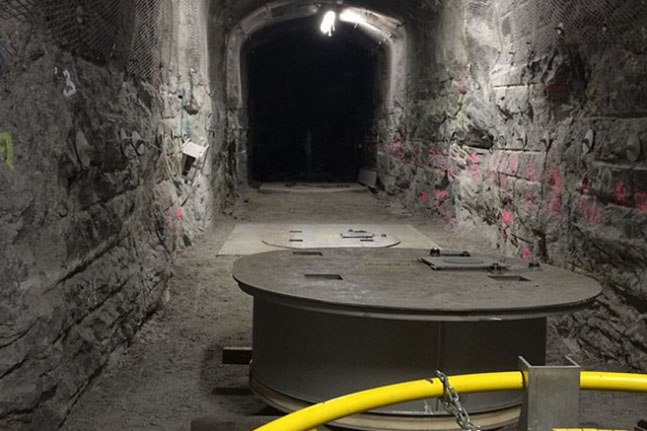
The system built to manage Russia’s nuclear legacy is crumbling, our new report shows
Our op-ed originally appeared in The Moscow Times. For more than three decades, Russia has been burdened with the remains of the Soviet ...
News

Publish date: February 28, 2017
News
Local residents near the town of Novouralsk in Russia have approved the second round of radioactive waste for delivery at the country’s first-ever nuclear repository.
The repository is a major benchmark for the country’s radioactive waste handler and its opening was assisted in part by consultation with Bellona.
The project is seen as an important and long overdue step toward securing the Soviet nuclear waste legacy.
Bellona’s Alexander Nikitin – who has helped facilitate the public hearings around the project – called the repository “the first important step” of Russia’s National Operator for Radioactive waste management.
Nikitin said the new site is the first to be built since Russia passed its nuclear waste management legislation, and its launch marks the breaking of a major logjam.
 Uranium enrichment at the Siberian Electrochemichal Combine. (Photo: publicatom.ru)
Uranium enrichment at the Siberian Electrochemichal Combine. (Photo: publicatom.ru)
The Novouralsk facility will be able to store solid waste in isolation from the outside environment for 300 years, ten times longer than any other current storage schemes in Russia.
The 48,000 cubic meter facility in the Sverdlovsk Region’s closed nuclear city lies at shallow depth and operates as a repository for what state nuclear corporation Rosatom classifies as type 3 and 4 wastes, which has generally low to medium levels of radioactivity. The site is built to hold the waste for 300 years.
The recent public hearings held in the Svderdlovsk Region town were critical to green lighting some 5,000 cubic meters of radioactive waste coming mostly from the Siberian Electrochemical Combine, Russia’s largest uranium enricher.
According to Niktin, the waste will be shipped to the site in two stages and stored until it’s interred. The first stage is storing waste until 2016, and the second, which was approved at the public hearing held last week, will store waste until 2036.
That year, said Nikitin, marks the last year that waste will be shipped to the site. The repository thereafter will be at capacity.
The Novouralsk site is part of a bloom in repositories spearheaded by the young National Operator, also known as NO RAO, and state nuclear corporation Rosatom around the country.
The two plan to build further repositories for type 3 and 4 waste at the closed nuclear city of Ozersk, where the notorious Mayak Chemical Combine is located. Another is planned for the closed city of Seversk in the Tomsk Region.
Yet another site is expected in Northwest Russia, but that search has not progressed as smoothly. The geology surrounding St Petersburg and the Leningrad Nuclear Power Plant is arguably better suited than areas in the Murmansk Region, where Rosatom has also looked.
Fierce opposition from activists around St. Petersburg, however, makes a repository in that area a hard sell, and some environmentalists in Murmansk fear their area will be selected simply because of a lack of organized and vocal opposition.
Waste that is much more radioactive than that being stored in Novouralsk – the type Rosatom classifies as level 1 and 2 – requires more time to dispose of.
Safely storing this high level waste is the focus of experiments in the Krasnoyarsk region of central Siberia, where NO RAO is building an underground laboratory to study the Nizhnekansky Rock Mass.
If the rock mass proves suitable, construction of a high level waste repository could begin in 2024. How much waste the site would hold has yet to be determined.

Our op-ed originally appeared in The Moscow Times. For more than three decades, Russia has been burdened with the remains of the Soviet ...

The United Nation’s COP30 global climate negotiations in Belém, Brazil ended this weekend with a watered-down resolution that failed to halt deforest...

For more than a week now — beginning September 23 — the Zaporizhzhia Nuclear Power Plant (ZNPP) has remained disconnected from Ukraine’s national pow...

Bellona has taken part in preparing the The World Nuclear Industry Status Report 2025 and will participate in the report’s global launch in Rome on September 22nd.